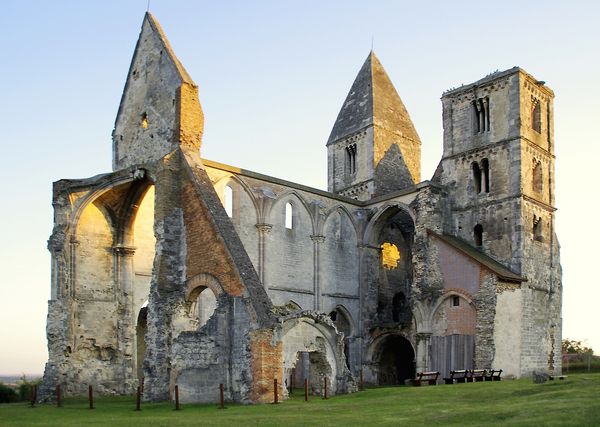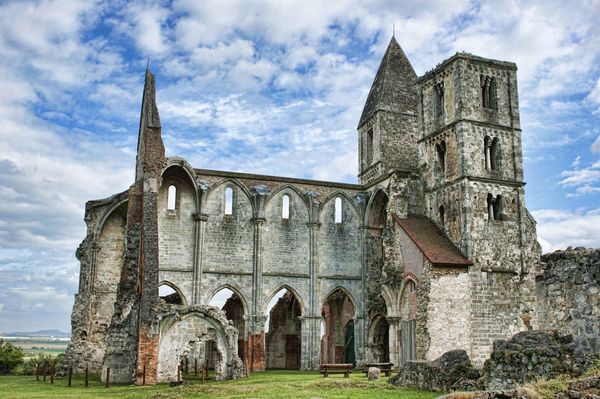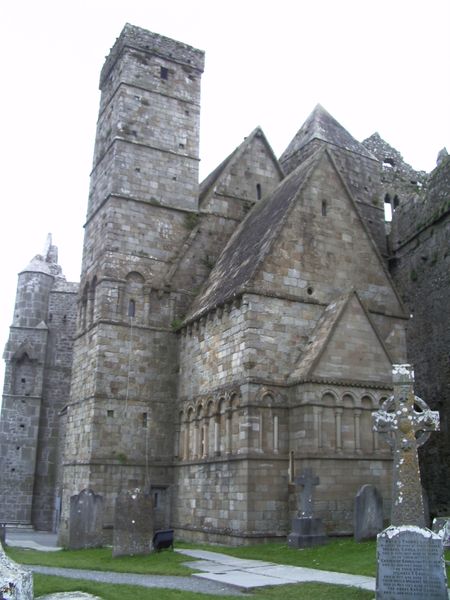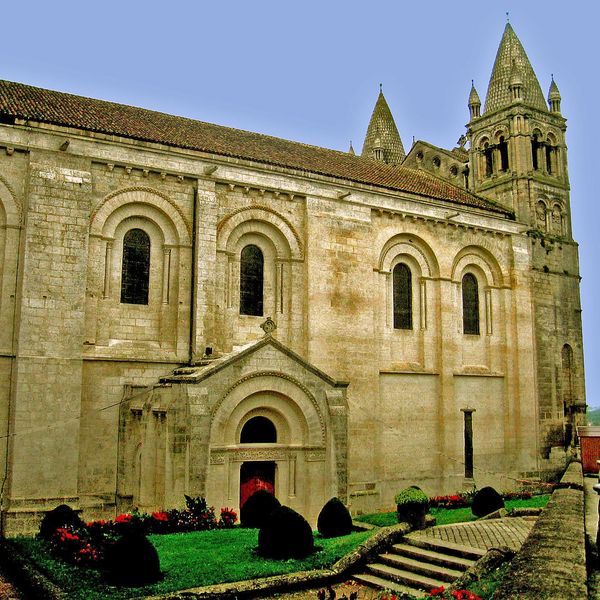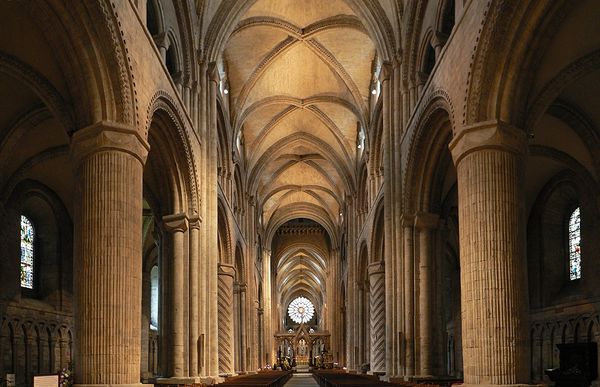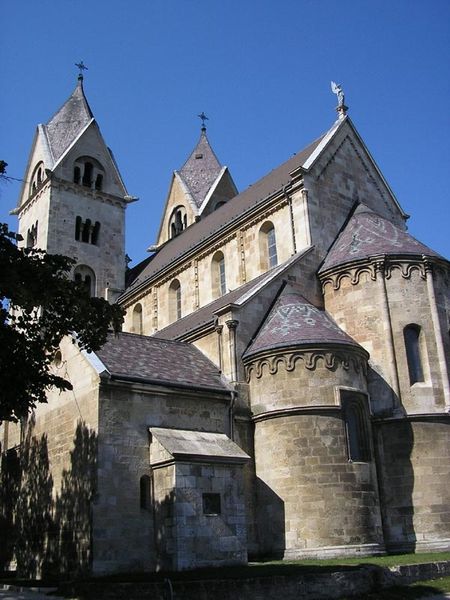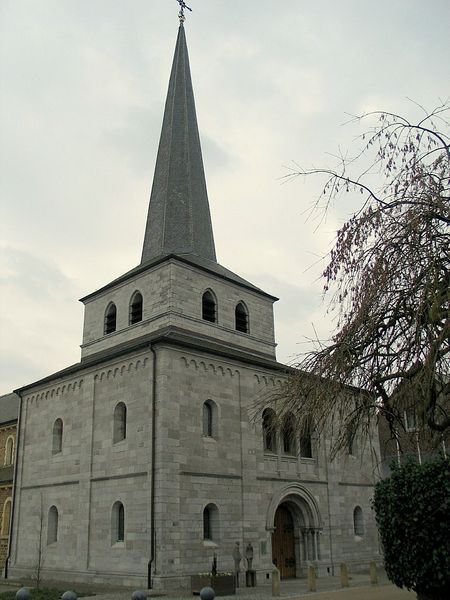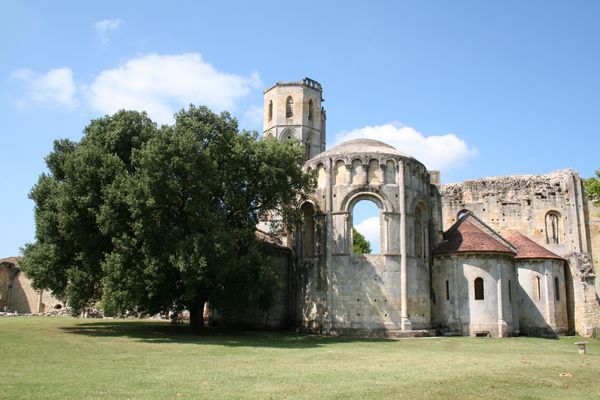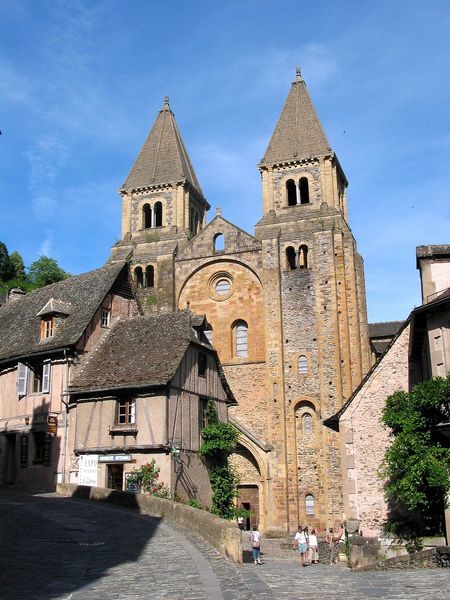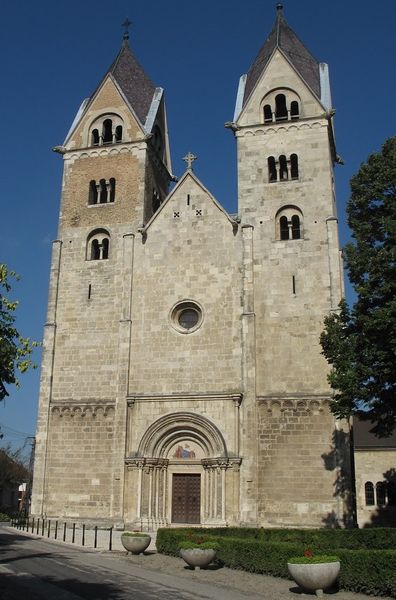
carving, architecture
#
medieval
#
carving
#
landscape
#
historic architecture
#
romanesque
#
arch
#
architecture
#
historical building
Copyright: Public domain
Editor: We're looking at the Facade of Malmesbury Abbey in England, which dates back to 1180. It really showcases the scale and enduring quality of Romanesque architecture, especially in its use of stone. What strikes me is how the weathering on the facade seems to emphasize the age and weight of the material itself. How do you interpret this work? Curator: I see a potent example of labor and materiality. The stone, undoubtedly quarried locally, dictated the structure's form. Each block represents human effort, a collective exertion to build something lasting. Look closely at the tooling marks, the slight imperfections—evidence of individual hands shaping the material to a larger social end. Editor: So, the abbey is not just a religious structure, but also a physical record of medieval labor? Curator: Exactly. The building's presence highlights the connection between manual labor, resource availability, and the prevailing social order. This wasn't mass-produced. This stone had to be worked by individual humans. Think of the resources required to construct and maintain the site, who had control over them and who performed the physical labor. Editor: I hadn't considered the specific labor practices so directly linked to the material. Curator: The Abbey blurs traditional boundaries of art and craft through construction. We might consider its labor force as artisans creating “high” art, the consumption of resources, and architectural handcraftsmanship and their socioeconomic impacts in shaping the site's built environment. Editor: Seeing the building through that lens gives me a completely different understanding. Thanks. Curator: Indeed! Thinking about materials and the human effort transforms how we see historic landmarks, it reveals broader insights of Romanesque architecture’s relationship between man and resources.
Comments
No comments
Be the first to comment and join the conversation on the ultimate creative platform.


